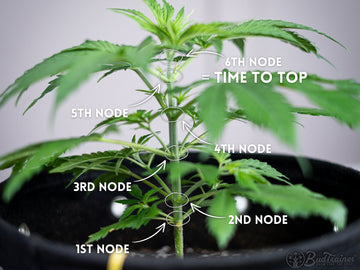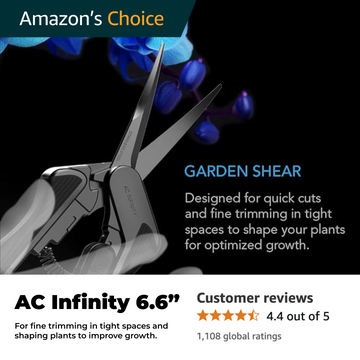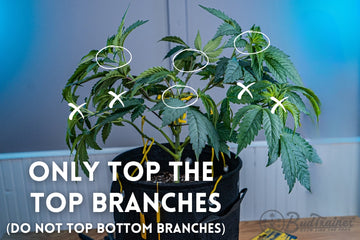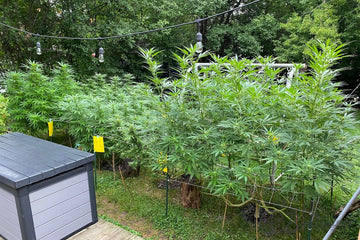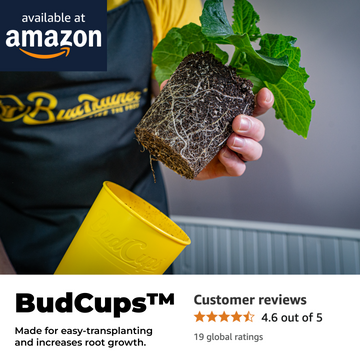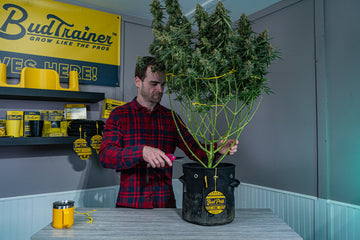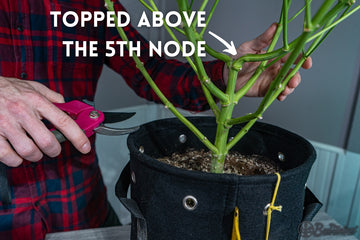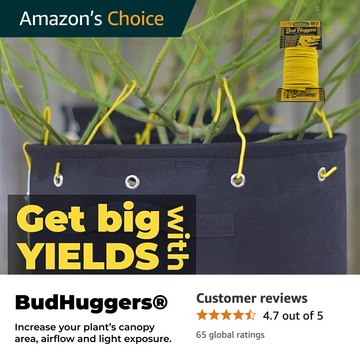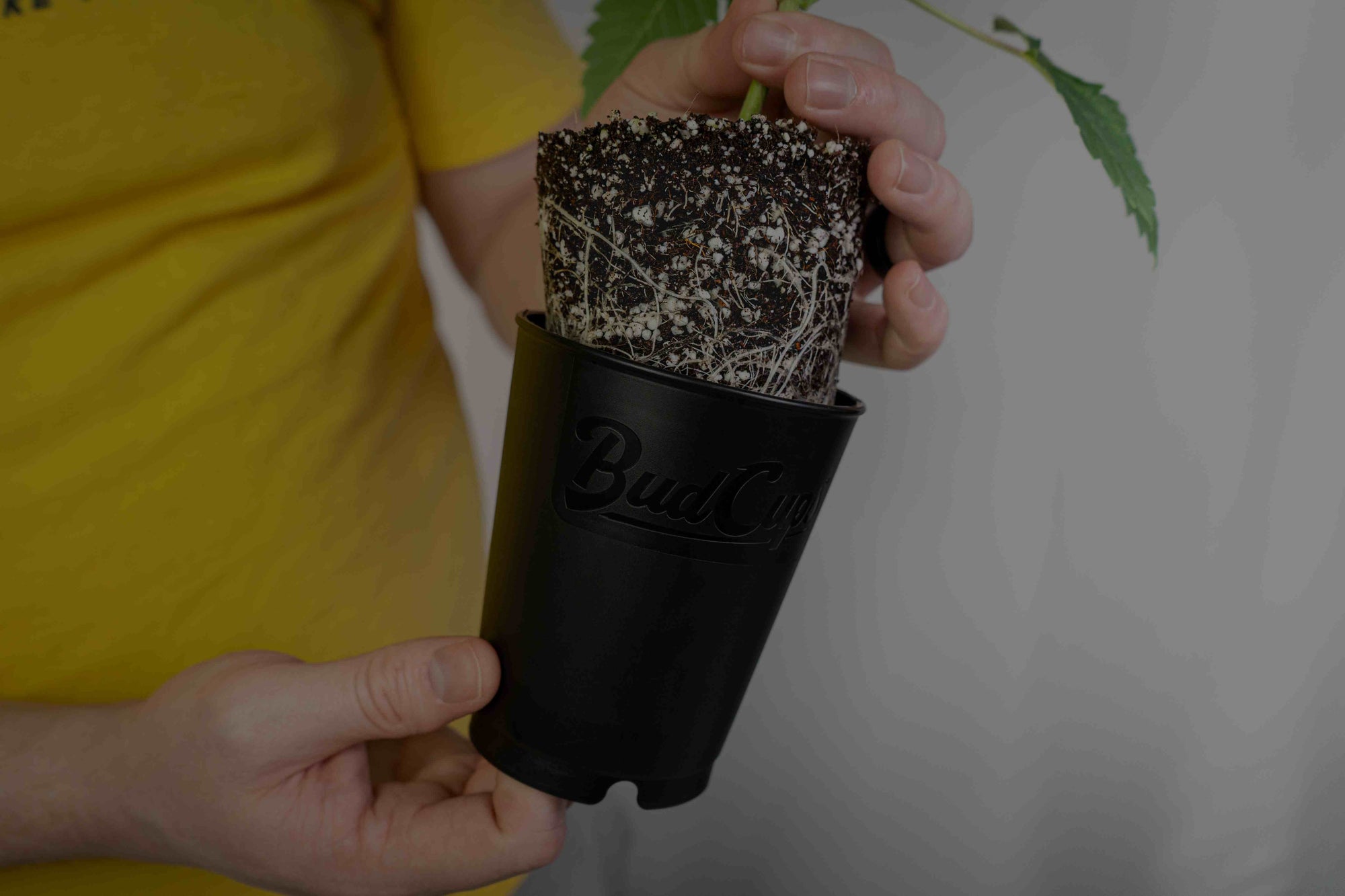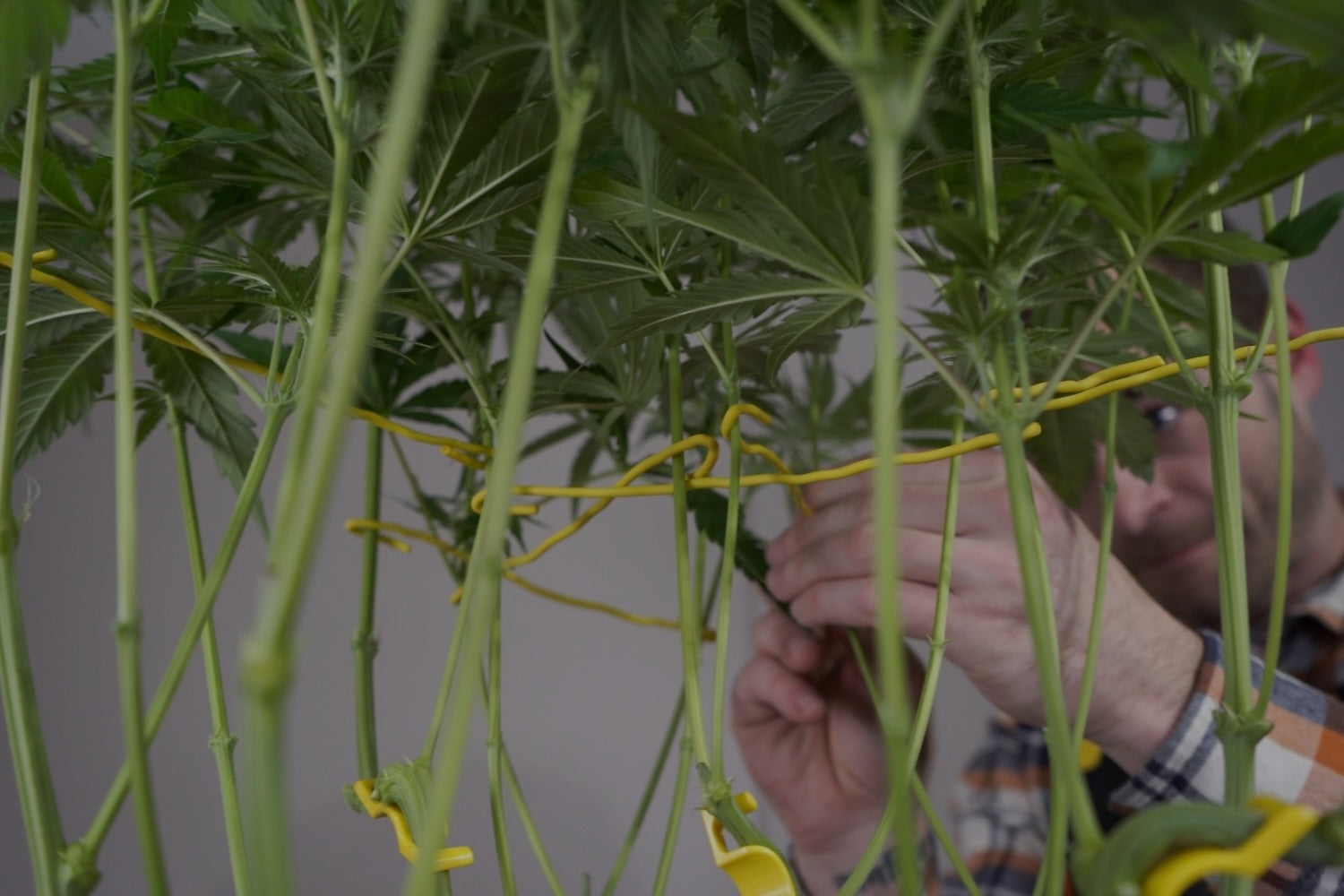The BudTrainer Method™ Lesson #3
When & How to Top Cannabis
(works with AUTOFLOWERS)
Written by cannabis production expert Henrique Dias - Updated on Oct 1, 2024
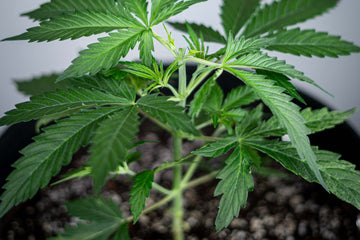
DISCLAIMER: Everything taught and sold by BudTrainer® is to be used strictly for legal purposes. We condemn the production of illegal substances and it is your duty to ensure that you are complying with the law. The words "hemp", "cannabis", "weed", and "marijuana" are used interchangeably to refer to the same plant (legal hemp with less than 0.3% THC) for the purposes of this lesson.
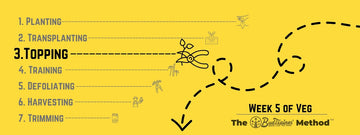
Topping For The Top
Topping is one of the simplest yet most underrated techniques in cannabis gardening. If ignored, your plant turns into a Christmas-shaped tree that is flimsy, prone to breaking in the wind if you are growing outdoors, or growing so tall they hit your indoor grow lights. We know this all too well because we’ve made this mistake before, until we took to plant science and commercial cannabis production standards to create a topping method that works on both photoperiods and autoflowers. Welcome to BudTrainer’s Lesson #3, where you will learn how to top like a pro.
Tools & Materials
- Trimming scissors
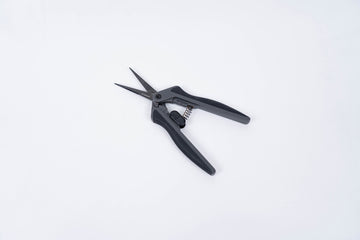
How to Top Weed Plants
Step 1
This part is the easiest - all you have to do is get a pair of sharp and pointy gardening scissors, and cut your cannabis plant between the 5th and 6th nodes, leaving behind 5 nodes, or 10 small branches and leaves.
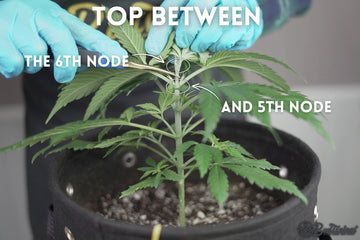
The smaller your 6th node, the less shock to your plant. If you wait too long and the 7th node appears, now you will be removing too much plant material, thus risking stunting your young marijuana plant. So don’t wait until it’s too late and top your plants when those tops are still small and harmless.
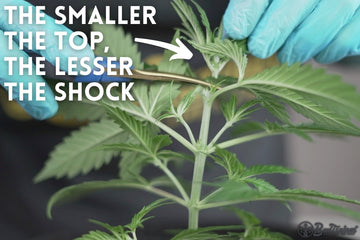
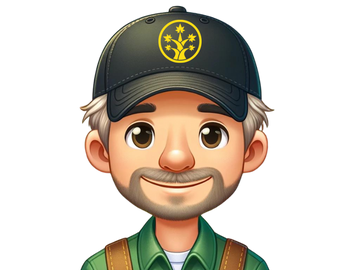
BudTip: Be Careful With Small Growth Sites
When topping really close to the 5th node, it is not uncommon to damage the small growth sites that are just popping out. In order to avoid touching, it helps slightly bedding the top sideways (the 6th node) in a way that gets the tip of the pruners out of the way. Also, this is another reason why using thin-tipped pruners is so important - it will help you avoid damaging those delicate little branches that just emerged.
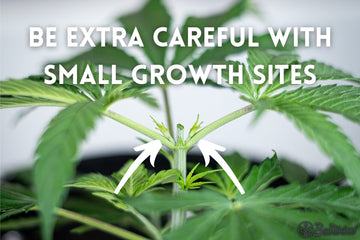
Step 2
Once you top above the 5th node, cut off both leaves and growth sites on the 1st node. The first node never grows into strong branches later on, and by removing it you help your plant send more energy to the 4 remaining top nodes.
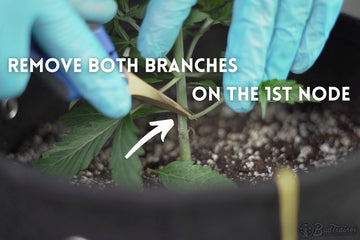
This should leave you with a total of 4 nodes on the plant, or 8 small branches (also called growth sites) and 8 leaves. These 8 growth sites will now grow into your new main branches, which is how your plant becomes multiplied.
You Are Off To Crafting A Great Canopy
Now that you topped your plant for the first time, you can wait for 1 to 2 weeks until it is ready for the first stage of training - which is the next lesson on The BudTrainer Method. To know when your plant is ready for training, simply check the size of your top 2 growth sites - the ones on the 5th node that you just topped above. When they are 2 inches in length, this means it’s time to start training them with the BudClips, and the lower branches with the BudPots and BudHuggers.
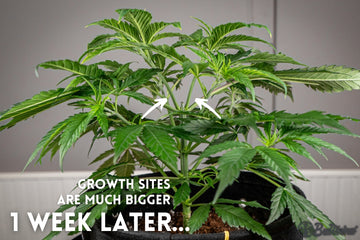
Behind The Leaves: Why Does Topping Increase Yields?
i. Survival & Reproduction
Just imagine a field with thousands of cannabis plants next to each other that are all fighting for survival and reproduction rights. In order to survive, every cannabis plant must access water, carbon dioxide, and light. And in order to reproduce, pollen from the male plants must meet the flowers from the female plants.
There are two important things to note here: access to light and pollination. Cannabis plants grow tall and skinny rather than short and bushy because they want to stand out from the crowd and get as much access to sunlight as they can. Additionally, female cannabis plants need to pollinate. For this to happen successfully, their buds need to be far up in the sky as they can be. This makes them exposed and increases the chances that male pollen will land on them via the wind. Alternatively, if the plants are trained off to the sides and the have a lot of shorter colas, the probability of pollination significantly decreases.
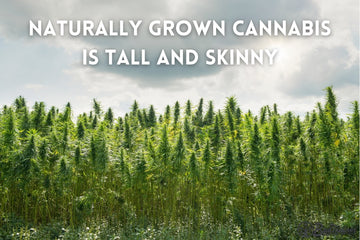
For the sake of survival and reproduction, then, we can conclude that the female cannabis plant is not so concerned about the quantity of buds - it’s a far better bet for it to have 1 amazing and exposed cola that will guarantee her reproduction rather than 100 smaller colas that will not catch light, or pollen.
ii. Breaking The Pattern
However, when growing cannabis at home, we kind of defeat the plant’s two purposes of survival and reproduction. Here is why.
For starters, we purposely want to stop our female cannabis plants from reproducing, otherwise they would end up giving us bad, seedy weed. And we are also not worried about its survival, because we can give our marijuana plants lots of space, water, light, and love. In a nutshell, the whole purpose of cannabis plants having that single tall and exposed cola gets defeated the moment we don’t need our cannabis plants to worry about reproducing and surviving anymore.
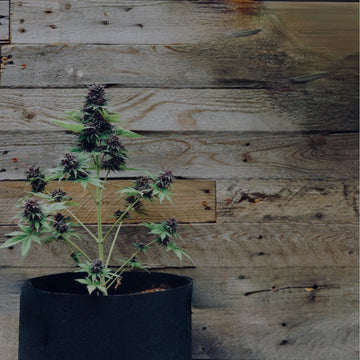
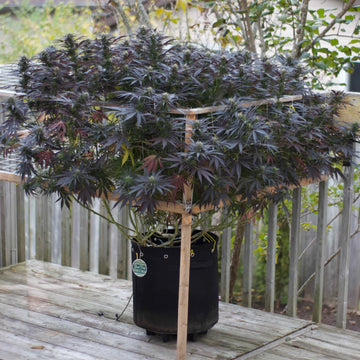
So when you top your plant during the vegetative stage, you are basically changing its anatomy to grow into multiple large and juicy colas, but using basically the same amount of time. Topping cannabis plants not only increases yields but also guarantees a more even distribution of your buds, producing lots of tops that are full of cannabinoids. The next question is: why does it do that after it's been topped?
iii. Auxins & Apical Dominance
There are natural growth hormones produced during the vegetative stage in the top-most tip of almost every plant called auxins. Auxins are responsible for cell elongation, and are the main driving factor helping the plant and the lower branches grow toward the light. This is why when you bend a branch sideways it starts to grow back up; i.e. you basically shaded the bottom part of the branch and forced the bottom cells to grow more than the top cells, which is what causes the distortion.
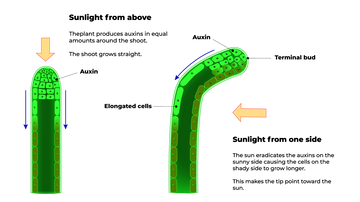
Auxins are mainly present in new growth sites, and they are produced in higher concentrations in those growth sites that are closer to the light. In a nutshell, this is why a lot of plants grow like a Christmas tree - the auxins produced at the top growth tip are what promote this tall growth while keeping the side lower branches smaller since they are farther from the light.
iv. Shifting The Focus
Since most auxins are concentrated at the top-most growth tip, if you cut that tip off you completely stop the upper growth from happening. All of the auxins that were being produced there are suddenly removed. But since the plant still needs to grow, it starts producing auxins elsewhere.
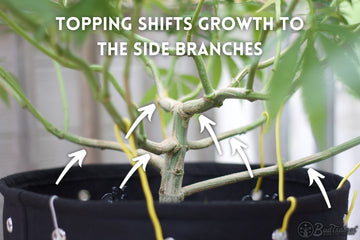
When a cannabis plant loses its apical meristem (the main top) it shifts the production of auxins to the lateral branches, almost as if they each became an independent plant themselves. In fact, this sudden production of auxins in the lateral branches forces them to grow out and become the plant’s new tops. This prevents your plant from reverting to vertical growth, like a Christmas tree shape, and instead produces a lot of bud tops for you to harvest later.
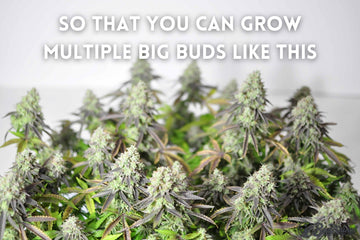
Learn to Grow Big Buds
And be the first to hear about new articles, product releases, and special events.
About The Author
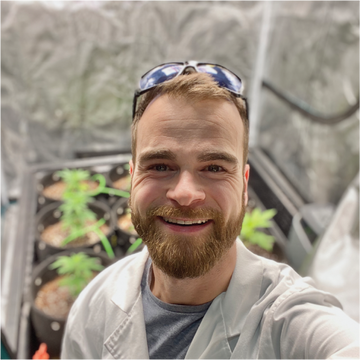
Henrique, the CEO of BudTrainer, is a mechanical engineer with a commercial cannabis production post-grad, and is also a former commercial cannabis consultant.
H takes plant science principles and breaks them down into simple steps for home growers to achieve the same results as the pros and grow the highest-quality cannabis.

